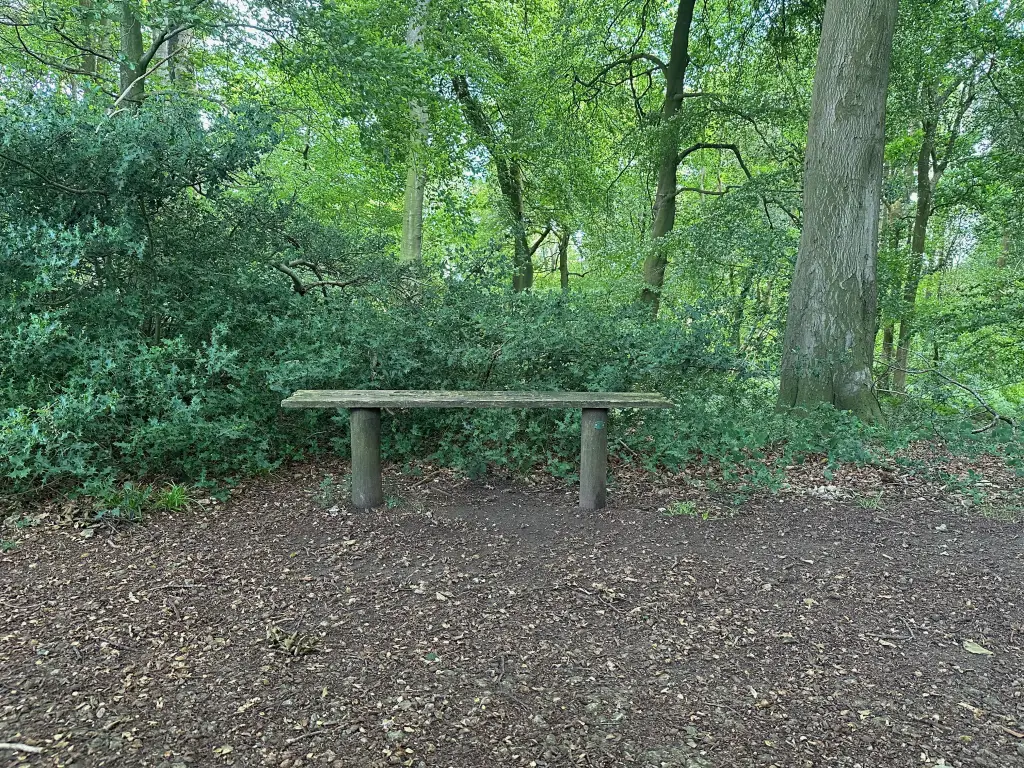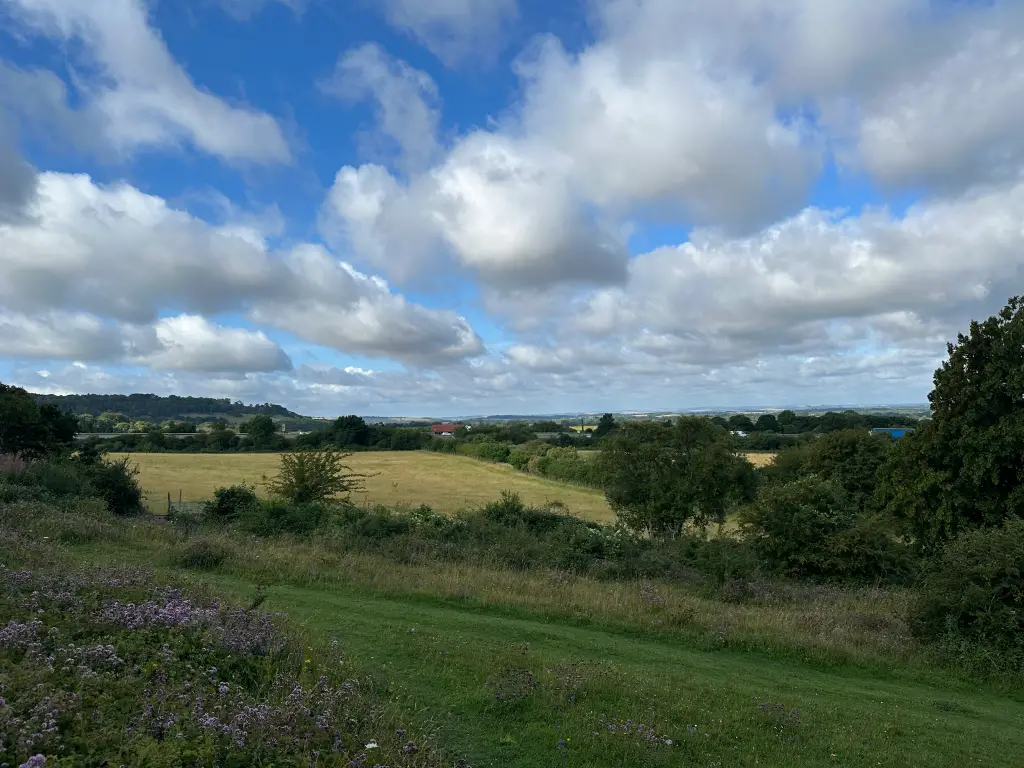Mindful hiking: where mindfulness meets the trails
Mindfulness: what is it and what are the benefits
Mindfulness – the superpower of being present and placing all your focus on a single point for an extended period of time, one often conducted when you’re stationery with your eyes closed and your mind’s eye fixed on your breath.

The obvious question you’re asking is this: what is mindful hiking? And is it really possible to hike and be mindful at the same time?
Yes, but as you’ve no doubt guessed it’s not simply a matter of letting your mind wander to the hills and countryside as you hike. Instead, mindful hiking is a very precise activity and when done right can give you the same huge benefits that come with the more orthodox method of practicing mindfulness and with an added benefit – being at one with nature. Can you think of a more perfect fusion of activities?
Before we move on let’s look at the documented benefits of mindfulness:
- improved focus and concentration. The simple act of being mindful, of fixing your focus on a single point and allowing all other thoughts to drift past your mind’s eye, teaches you to notice only what is important at that moment. By discarding other thoughts and images you train your brain for improved focus.
- Stress reduction. Research (Farb et al., 2010) demonstrates that the practice of meditating reduces anxiety, depression and somatic distress (physical pain, weakness, functional problems, etc)
- Reduced rumination. A daily dose of mindful meditation has been shown to reduce the number, and intensity, of negative thoughts and feelings welling up in your mind. The research also documents reduced rates of depression among mindfulness practitioners.
- Improved working memory. In 2010 a study (Jha et al.) demonstrated improved working memory among a group of military personnel engaged in eight weeks of mindfulness training. The outcome was one of improved working memory among the test group.
- Reduction in emotional reactivity. During tests carried out in 2007 (Ortner et al., 2007), researchers found participants were less likely to respond to upsetting incidents, images and language than peers who were not actively practicing mindfulness.
There are more documented benefits associated with mindfulness and meditation, but we’re not going to explore those today.
As a hiker, when you look at the list you can see a number of overlaps between hiking and mindful meditation and the most obvious conclusion I come to is this: a mindful hike is the perfect union of being in the moment and in the great outdoors.
So how do you create mindful hikes?
How to do mindful hiking
As you’ve guessed, there is a little more to hiking in a way that merges the art of mindfulness whilst still immersing yourself in all the beauty nature has to offer.
Hiking can be carried out at a number of paces: many ultra-lightweight hikers I know move fast, carrying the bare minimum to survive and the pace at which they move is not what you’d consider optimal for anyone planning a mindful hike. At the far end of the spectrum is the ‘ambler’ – the slow and steady hiker whose every hike is a long and winding journey through the wilderness. Often, you’ll find this type of hiker pausing for short periods to allow the eyes to absorb the many wonders of the trail, or plunge their mind into the bounties nature has to offer, but they’re easily distracted and their eyes roam from view to view, rarely pausing for more than a few moments.
Here’s how you do it…
Put aside your normal hiking routine

When you hike your mind likely flits from one place to another: one moment you’re eyes are drawn to movement, or you notice a flash of bright plumage reflecting the sun’s ray, and the next you’re counting down the steps to your next checkpoint with which comes the opportunity to take a break and eat. Well, that’s where my head goes on a hike – my attention is often fragmented and spread over the many beauties of the trail.
Mindfulness requires a good degree of self-discipline which, ironically, only improves the more you practice the art of being mindful.
The first step on your path to true mindful hiking is to put aside your normal hiking routine. Rather than let your mind wander from place to place, settling on a butterfly for a few moments and then flicking to those rays of light streaming through the canopy of leaves above you, you need to learn to fix your mind on a particular point for a period of time. But where? We’ll come to that soon.
Consciously engage with nature
What do we mean by ‘consciously engage’? It’s quite simply a state of mind where you allow yourself to connect with nature and hold that connection for a period of time. Here’s an example, one you have likely experienced but discounted: imagine hiking through a forest. All around, to your left, right and overhead is a dense sea of green connected to a wooden framework of life. When you first start to find your eyes drawn to the shapes and colours, pause your hike and allow your mind to simply roam across the sights and sounds, allowing your body to feel the breeze, heat, or rain.
That’s what we mean by engaging with nature.
Often we tend to notice those sights and sounds, then discard them as our senses are drawn to something new and equally interesting, and this engagement – the process of allowing yourself to connect – can take some practice.
Focus on one point, not your peripheral vision
What next? Once you’ve paused and created a connection with the wider world, bring your attention to a single focal point. For clarity, this may be something visible or a sensation such as the wind or sun’s rays touching your skin. If you’re using your eyes fix them dead centre of your field of vision, and ignore all that appears in your peripheral vision. This previous step is important – all that we experience in the periphery is indistinct, often blurred, and difficult to fixate on, and the key concept in any kind of mindfulness practice is to allow your mind to settle on a specific point, action, or sensation.
Now keep yourself present in the moment, allowing all your focus to notice whatever it is that has captured your imagination. The key word here is ‘notice’. Don’t describe the sensations of the body, sight, etc, and instead, simply let your mind rest on that point. Acknowledge any thoughts that form, then feel them fade into nothing.
Hold that nature connection

The final step on the path of mindful hiking is to simply hold that connection for a period of time. Unlike a mindful meditation practice, you likely don’t have 15 minutes at a time to allow your mind to settle on a specific point, especially when you’re in a group or working to a particular timetable. Over the years I’ve practiced mindfulness whilst hiking and have found the optimal time to be a couple of minutes during a pause in the journey, but you could also try exploring mindful walking…
What is mindful walking?
Often called meditation in motion, mindful walking is simply the act of meditating whilst on the move – its body and mind acting as one. The aim is to practice moving mindfulness to enhance your consciousness of your bodily sensations. As you stroll, directing your attention to the environment and the feelings in your body can aid in staying focused on the present moment. Some individuals have said they feel it’s to a form of meditation while in motion!
Here’s a quick example of mindful walking that focuses on your body in motion – as you walk, take notice of the feelings and sensations that come with each step. Feel the weight and pressure of your feet as you step forward, and notice the feeling as the pressure decreases each time you lift your feet. An alternative is to let your mind settle on the feeling of the breeze on your skin, of the sounds of leaves jostled by the wind or the sensation of raindrops on your face. Don’t label these sensations, instead notice them.
I often practice on my long distance walks, where I slow the pace and take time to immerse myself, but this form of meditation can be practiced even on short hikes.
Why does time in nature feel so good?
There are many scientific papers that tell us why being in nature feels so good and if you’ve ever read any of them you’ll notice they talk about how being in nature reduces stress. I believe that, from a hiking perspective, it’s more a frame of mind – some of us love the outdoors, and take every opportunity to engage with nature no matter what the weather or how we feel. At the end of the day, even a simple walk through the woods or along a secluded beach gives us a huge boost to both our mental health and sense of overall well-being.
Really, what is a mindful hike?
It’s finding the stillness, one with a nature connection to which you connect your body and mind. Simple as that, but if you want to be a little more technical, it’s time in the great outdoors during which you connect with your surroundings for short periods of time, allowing yourself to be present and your attention to settle on a specific point, then moving on. Then repeat again and again until you feel refreshed in a way that is beautiful.
And if all of this was a little too long for you to read, here’s a summary:
- Mindful hiking is a practice that combines the physical benefits of hiking with the mental and emotional benefits of mindfulness.
- Become fully present in your natural surroundings by engaging all the senses to notice and appreciate the environment.
- Focus on your breath and footsteps, and feel a sense of grounding.
- Take some time to self-reflect and forge a deeper connection with nature to foster a greater appreciation for the world around you.
- Mindful hiking can improve mental clarity, enhance well-being, and a renewed sense of balance and harmony in your life.




